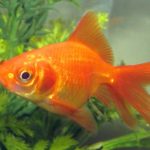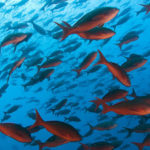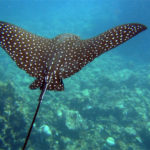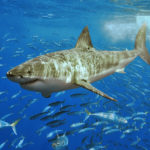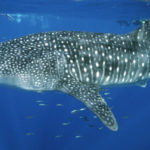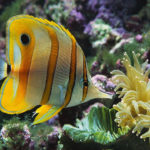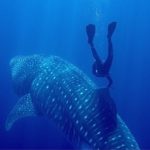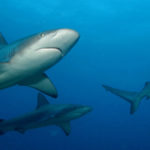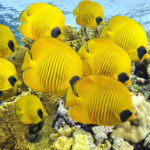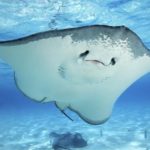Fish
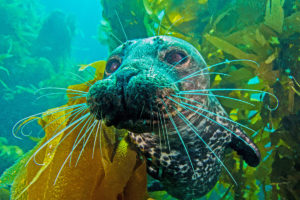 Fish are commonly referred to as all aquatic vertebrates, breathing gills and having paired limbs in the form of fins. However, this general concept unites in fact 3 independent classes of vertebrates: Cyclostomes (in the modern fauna are represented only by lampreys and myxins) and cartilaginous (sharks, rays and chimeras) and the most highly organized bone fishes. Nowadays, about 20 thousand species of fish are known, more than in the other classes of vertebrates (amphibians, reptiles, birds and mammals) taken together. Each year this number continues to increase as a result of the description of new species.
Fish are commonly referred to as all aquatic vertebrates, breathing gills and having paired limbs in the form of fins. However, this general concept unites in fact 3 independent classes of vertebrates: Cyclostomes (in the modern fauna are represented only by lampreys and myxins) and cartilaginous (sharks, rays and chimeras) and the most highly organized bone fishes. Nowadays, about 20 thousand species of fish are known, more than in the other classes of vertebrates (amphibians, reptiles, birds and mammals) taken together. Each year this number continues to increase as a result of the description of new species.
The incredible diversity of the fish population is a result of the widespread distribution of fish in almost all areas of the highly variable aquatic environment. Pisces can be found in mountain streams with a current speed of up to 2 m / s and more and in standing ponds, at great depths, where the pressure reaches 1000 atm, at the surface of the water and in small puddles left after rains or high water in mountain lakes At an altitude of 600 m above sea level and in underground caves. Fish live also at temperatures close to the freezing point of salt water (-2 °, -3 ° C), and in hot springs with a water temperature above 52 ° C, in transparent keys and in turbid streams and marshes and even in artesian waters , They transfer salinity to 60-80% and a decrease in the oxygen content in water to 0.5 cc per liter.
Fish not only swim in the water. They can crawl along the bottom, and sometimes overland, bury themselves in the sand, or even fly, planning or flapping their fins, like wings. Fish hear, and they make sounds, see and distinguish colors, regulate their buoyancy and coloring, have organs of smell, touch, balance. They react to changes in external pressure, precipitate suspended matter in troubled water, perceive the Earth’s magnetic field and can navigate the magnetic meridian, catch the slightest fluctuations in water.
They not only respond to electric shock, but can produce electrical discharges themselves (sometimes up to 600 watts) and create an electromagnetic field around their bodies. Some deep-sea forms have special glow organs, sometimes difficult to arrange, and those with oxygen deficiency have additional respiratory organs: external gills, nasupers, transformed into an “easy” swim bladder, etc. They can breathe the surface of the body and the intestines, swallow the atmospheric air And use the oxygen of the swim bladder.
Extremely diverse form of the body of fish: from serpentine or ribbon-shaped to spherical or wide flat with a whole gamut of transitions. In coloring, there are all possible and impossible shades, moreover, the color can vary within a day, with age, at the time of puberty. The smallest known fish has a length of 7.5-11.5 mm, and giant fish can reach 18 m or more.
In fish, you can observe a complex group (schooling), food and mating behavior, a certain social structure. Many species make long trips, overcoming many obstacles on their way. And than only the fish do not feed! There are among them cannibals eating their own juveniles, and there are parasites, there are gourmets for whom the only food is slime or scales of other species of fish.



